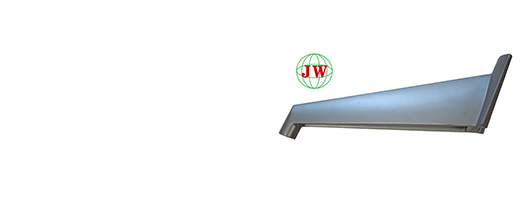
Lighting Die - Casting: Meeting the Stringent Standards of the Lighting Industry
2025-03-24 15:30
In the highly competitive and ever - evolving lighting industry, quality and safety are of utmost importance. Lighting die-casting has emerged as a critical manufacturing process that plays a pivotal role in meeting the stringent standards set by the industry.
Die - casting in the lighting context involves forcing molten metal, typically aluminum or zinc alloys, under high pressure into a precisely designed mold cavity. This process allows for the creation of complex and detailed lighting components with high precision and consistency. The resulting parts are not only aesthetically pleasing but also offer excellent functionality.
One of the key aspects of meeting industry standards is the selection of appropriate materials. Aluminum alloys are widely used in lighting die-casting due to their numerous advantages. Aluminum is lightweight, which is crucial for lighting fixtures, especially those that need to be easily installed or suspended. It also has good heat dissipation properties, which is essential for LED-based lighting systems. LEDs generate heat during operation, and efficient heat dissipation is necessary to ensure their long - term performance and lifespan. Additionally, aluminum alloys are corrosion - resistant, making them suitable for both indoor and outdoor lighting applications. For example, in street lighting fixtures that are exposed to various weather conditions, die- cast aluminum components can withstand rust and degradation over time, maintaining the integrity and performance of the lighting system.
The die - casting process itself must adhere to strict quality control measures. Precision in mold designand manufacturing is essential. The mold cavity needs to be crafted with extreme accuracy to ensure that the final lighting component has the correct dimensions and surface finish. Any deviation in the mold can lead to defective parts that may not meet the industry's performance and safety standards. Advanced computer - aided design (CAD) and computer - aided manufacturing (CAM) technologies are now commonly used in the lighting die - casting industry. CAD allows designers to create intricate and optimized mold designs, while CAM ensures that the molds are fabricated with the highest precision. This combination of technologies helps in minimizing errors and producing consistent, high - quality lighting components.
Another important factor in meeting the stringent standards of the lighting industry is the control of the die-casting process parameters. The temperature of the molten metal, the pressure applied during casting, and the cooling rate all need to be carefully regulated. For instance, if the temperature of the molten metal is too high or too low, it can affect the quality of the cast part, leading to issues such as porosity or improper solidification. The pressure during casting must be sufficient to ensure complete filling of the mold cavity, but not so high as to cause damage to the mold or create internal stresses in the part. By precisely controlling these parameters, manufacturers can produce lighting components that are free from defects and meet the required mechanical and electrical properties.
Quality inspection is a crucial step in the lighting die - casting process. Manufacturers employ a variety of inspection methods to ensure that the finished products meet the industry standards. Visual inspection is used to check for surface defects such as cracks, porosity, or uneven finishes. Dimensional inspection, often using precision measuring instruments, verifies that the components have the correct size and shape. In addition, mechanical and electrical tests are conducted to assess the strength, durability, and electrical conductivity of the die-cast lighting parts. For example, lighting fixtures may be subjected to stress tests to simulate real - world usage conditions and ensure that they can withstand normal wear and tear. Electrical safety tests are also carried out to ensure that the components do not pose any risk of electrical shock or fire hazards.
Meeting the standards of the lighting industry also extends to environmental considerations. With the growing focus on sustainability, lighting die - casting manufacturers are increasingly adopting eco - friendly practices. This includes the use of recycled materials in the die - casting process and the implementation of energy - efficient manufacturing techniques. By using recycled aluminum, for example, manufacturers can reduce the demand for virgin materials and lower their carbon footprint. Energy - efficient die - casting machines and processes help in conserving energy and reducing overall production costs.
In conclusion, lighting die-casting is a vital process in the lighting industry that enables the production of high - quality, safe, and sustainable lighting components. By carefully selecting materials, controlling the die-casting process, conducting rigorous quality inspections, and embracing environmental sustainability, manufacturers in the lighting die - casting sector are successfully meeting the stringent standards of the lighting industry. As the industry continues to evolve, further advancements in lighting die - casting technology are expected to drive even higher levels of quality and performance
Get the latest price? We'll respond as soon as possible(within 12 hours)












